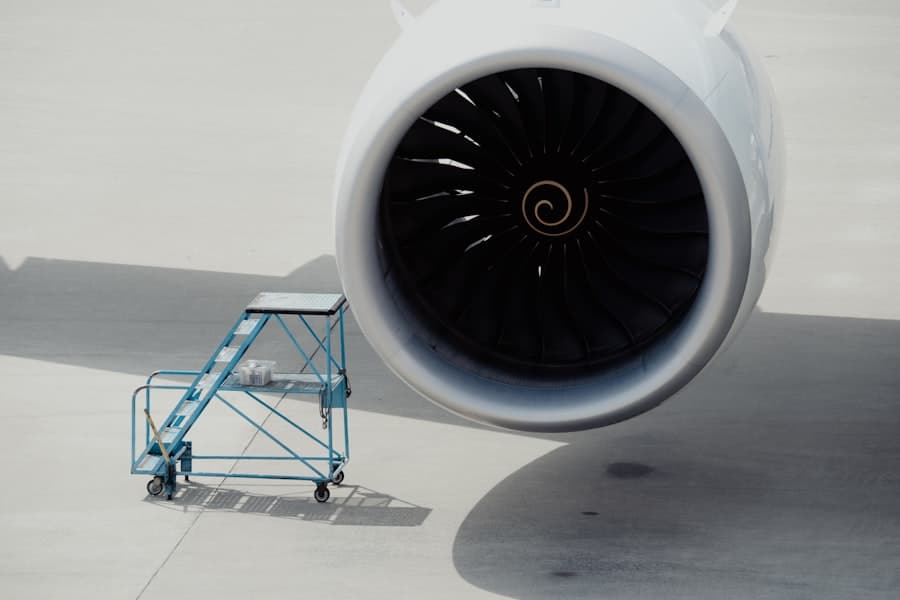The aviation industry is undergoing a significant transformation as it grapples with the pressing need to reduce its carbon footprint. The demand for sustainable aviation fuel (SAF) has surged in recent years, driven by a combination of regulatory pressures, consumer expectations, and the industry’s commitment to achieving net-zero emissions by 2050. Airlines are increasingly recognizing that traditional fossil fuels are not only environmentally damaging but also subject to volatile pricing and supply chain uncertainties.
As a result, there is a growing consensus that SAF represents a viable pathway to decarbonize air travel while maintaining operational efficiency. The urgency for sustainable alternatives is underscored by the International Air Transport Association (IATA), which has set ambitious targets for the aviation sector. According to IATA, the industry aims to cut net emissions in half by 2050 compared to 2005 levels.
This goal is not merely aspirational; it reflects a broader societal shift towards sustainability, with consumers increasingly favoring brands that demonstrate environmental responsibility. Airlines are responding to this shift by investing in SAF, which can be produced from various feedstocks, including waste oils, agricultural residues, and even carbon captured from the atmosphere. This diversification of sources not only enhances energy security but also aligns with global sustainability goals.
Key Takeaways
- The demand for sustainable aviation fuel is increasing due to environmental concerns and regulatory pressures.
- Advancements in production technologies are making sustainable aviation fuel more cost-effective and scalable.
- Government policies play a crucial role in promoting the use of sustainable aviation fuel through incentives and mandates.
- Partnerships and investments in infrastructure are essential for the widespread adoption of sustainable aviation fuel.
- Scaling up production of sustainable aviation fuel faces challenges such as feedstock availability and cost competitiveness.
Advancements in Sustainable Aviation Fuel Production
Recent advancements in the production of sustainable aviation fuel have been pivotal in making SAF more accessible and economically viable. Technological innovations have led to the development of several pathways for SAF production, including the Fischer-Tropsch synthesis, hydroprocessed esters and fatty acids (HEFA), and alcohol-to-jet processes. Each of these methods has its unique advantages and challenges, but collectively they represent a significant leap forward in the quest for cleaner aviation fuels.
For instance, HEFA technology allows for the conversion of waste oils and fats into jet fuel, which can be blended with conventional jet fuel without requiring modifications to existing aircraft engines or infrastructure. Moreover, research institutions and private companies are collaborating to enhance the efficiency of SAF production processes. For example, companies like LanzaTech are pioneering methods to convert industrial emissions into ethanol, which can then be transformed into jet fuel.
This not only reduces waste but also provides a circular economy solution that captures carbon emissions before they enter the atmosphere. Additionally, advancements in biorefinery technologies are enabling the extraction of high-value products from biomass, further improving the economic feasibility of SAF production. As these technologies mature, they promise to lower production costs and increase the scalability of SAF, making it a more attractive option for airlines.
The Role of Government Policies in Promoting Sustainable Aviation Fuel

Government policies play a crucial role in shaping the landscape for sustainable aviation fuel production and adoption. Many countries have recognized the importance of SAF in achieving their climate goals and have implemented various incentives to stimulate investment in this sector. For instance, the United States has introduced tax credits for SAF production through the Inflation Reduction Act, which encourages producers to invest in cleaner technologies.
Similarly, the European Union has set ambitious targets for renewable energy use in aviation as part of its Fit for 55 package, mandating that a certain percentage of aviation fuel must come from renewable sources by 2030. In addition to financial incentives, governments are also fostering collaboration between stakeholders in the aviation ecosystem.
These collaborative efforts are essential for addressing regulatory hurdles and ensuring that SAF meets safety and performance standards required by aviation authorities. Furthermore, government support can help bridge the gap between research and commercialization, facilitating pilot projects that demonstrate the viability of SAF in real-world scenarios.
Partnerships and Investments in Sustainable Aviation Fuel Infrastructure
The transition to sustainable aviation fuel is not solely dependent on production; it also requires significant investments in infrastructure to support its widespread adoption. Airlines, fuel producers, and airports are increasingly forming partnerships to develop the necessary supply chains and distribution networks for SAF. For example, major airlines like United Airlines and Delta Air Lines have entered into agreements with biofuel producers to secure long-term supplies of SAF.
These partnerships not only ensure a consistent fuel source but also help drive down costs through economies of scale. Investments in infrastructure are also critical for facilitating the blending and storage of SAF alongside conventional jet fuel. Airports are beginning to upgrade their facilities to accommodate SAF delivery systems, which can include dedicated pipelines and storage tanks designed specifically for sustainable fuels.
The collaboration between airlines and airport authorities is essential for creating a seamless supply chain that can support the growing demand for SAF. Additionally, private investors are recognizing the potential of SAF as a lucrative market opportunity, leading to increased funding for startups focused on innovative fuel production technologies.
Overcoming Challenges in Scaling Up Sustainable Aviation Fuel Production
Despite the promising advancements in sustainable aviation fuel production, several challenges remain that must be addressed to scale up its use effectively. One of the primary obstacles is the high cost of producing SAF compared to conventional jet fuel. While technological advancements are driving down costs, SAF production still requires significant capital investment and operational expenses that can deter potential producers.
To overcome this barrier, continued research and development are essential to improve production efficiencies and reduce reliance on expensive feedstocks. Another challenge lies in the limited availability of feedstocks necessary for large-scale SAF production. While there is potential for using waste materials and agricultural residues, competition for these resources can arise from other industries seeking sustainable inputs.
This necessitates a comprehensive approach to feedstock sourcing that considers sustainability criteria and ensures that food security is not compromised. Additionally, regulatory frameworks must evolve to support innovative feedstock options while maintaining safety and environmental standards.
The Environmental and Economic Benefits of Sustainable Aviation Fuel

The environmental benefits of sustainable aviation fuel are substantial and multifaceted. By utilizing feedstocks that would otherwise contribute to waste or emissions, SAF can significantly reduce greenhouse gas emissions compared to traditional fossil fuels. Studies have shown that certain types of SAF can achieve lifecycle emissions reductions of up to 80% when compared to conventional jet fuel.
This reduction is critical for mitigating climate change impacts associated with air travel, which accounts for approximately 2-3% of global carbon emissions. Economically, investing in sustainable aviation fuel presents opportunities for job creation and economic growth within the green economy sector. The development of SAF production facilities can stimulate local economies by creating jobs in manufacturing, logistics, and research sectors.
Furthermore, as airlines adopt SAF at scale, they may benefit from reduced exposure to volatile fossil fuel prices, leading to more stable operating costs over time. This economic resilience is particularly important as airlines navigate recovery from disruptions caused by global events such as pandemics or geopolitical tensions.
The Future of Sustainable Aviation Fuel and its Impact on the Aviation Industry
Looking ahead, sustainable aviation fuel is poised to play a transformative role in reshaping the aviation industry. As technological advancements continue to improve production methods and reduce costs, it is likely that SAF will become an integral part of airlines’ fuel strategies. Major airlines have already committed to increasing their use of SAF as part of their sustainability pledges, with some aiming for 10% or more of their total fuel consumption to come from sustainable sources within the next decade.
The widespread adoption of SAF could also catalyze further innovations within the aviation sector. As airlines invest in cleaner fuels, there may be increased interest in developing more efficient aircraft designs that complement the use of SAF.
The convergence of these advancements could create a new era of sustainable air travel that aligns with global climate goals while meeting growing passenger demand.
How Consumers Can Support the Adoption of Sustainable Aviation Fuel
Consumers play a vital role in driving the adoption of sustainable aviation fuel through their choices and preferences. By prioritizing airlines that commit to using SAF or have established sustainability initiatives, travelers can influence market dynamics and encourage more airlines to invest in cleaner fuels. Many airlines now offer options for passengers to contribute towards carbon offset programs or directly support investments in SAF through ticket purchases or loyalty programs.
Additionally, consumers can advocate for policies that promote sustainable aviation practices at local and national levels. Engaging with policymakers about the importance of supporting renewable fuels can help create an environment conducive to innovation and investment in SAF infrastructure. As awareness grows about the environmental impact of air travel, consumers can leverage their collective voice to demand greater transparency from airlines regarding their sustainability efforts and commitments to reducing carbon emissions through sustainable aviation fuel initiatives.
In the quest for more sustainable aviation practices, the article “How Sustainable Aviation Fuel Is Becoming Scalable” highlights the growing potential of alternative fuels in reducing the carbon footprint of air travel. For those interested in exploring other innovative solutions in different industries, the article “


